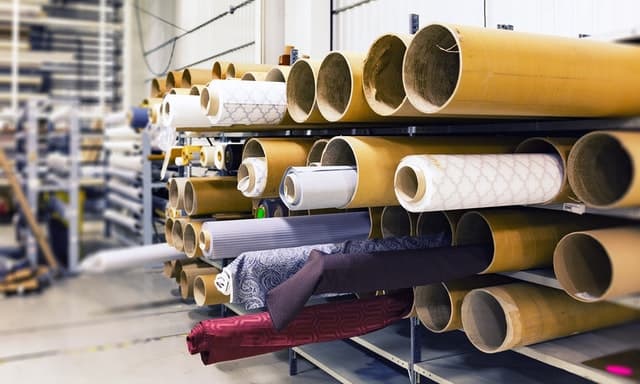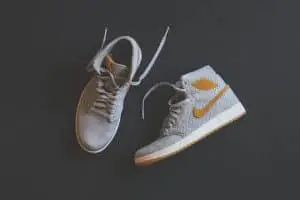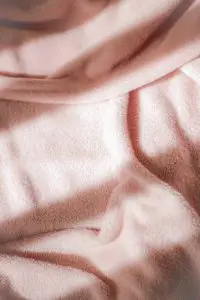When it comes to fashion, most formal dresses feature fabrics like wool, linen, cotton, or silk. However, to ensure top-quality comfortable, fashionable, and durable shirts, you need to pay attention to the weaving pattern. Two of the popular types of fabrics with varying weave patterns are twill and poplin. They’re pretty similar, making it difficult for many people to tell them apart. However, there are significant distinctions between both fabrics you need to note.
If you want to learn about twill and poplin and their unique features, you’re in the right place. This twill vs poplin comparison explores their origins, key differences, and properties. We’ll also touch on the best uses for them. Overall, you’ll find out all you need to know about twill and poplin fabrics. On that note, let’s begin.
Twill vs Poplin – What is Poplin Fabric?
Many people know poplin by another name: tabbinet. It is a delicate and dense fabric that features a horizontal warp and a vertical weft. Most times, the fiber used in creating poplin is wool, cotton, or silk. Poplin is quite strong because of its weaving technique. It also offers users a corded surface because of the horizontal ribs and the fabric.
Poplin’s weaving technique is unique and aims to ensure comfort for the wearer. It also feels crisp and provides a shiny look. Therefore, it is best for dresses, shirts, gowns, and more. Poplin is also popular in the production of sportswear and raincoats. The material is col and quite breathable. Its organic base material also ensures it offers a lightweight feature. Therefore, unlike others, wearers won’t feel trapped or overheated when wearing this fabric.
Origin of Poplin
Since poplin offers different types of thickness because of its weaving techniques, you can attribute its texture and look to its tight weave and pale horizontal ribbing. Poplin has been around for quite a while. Its first discovery was in the 15th century in Avignon, France. Initially, people referred to it as a papeline. This is because the Pope resided in Avignon at the time, and the fabric existed as an honor to the Pope itself.
As the years passed, Poplin became the main fabric used in creating outfits for British and American service members. Poplin could easily withstand tears and ordeals when the men were at the battlefront. It also kept the soldiers cool during hot days.
An excellent feature of the poplin fabric is that it is entirely resistant to tears and stains while offering a smooth look and feel to wearers. Its tight weave allows the fabric to drape perfectly over the body. Therefore, poplin is a flattering fabric for all body shapes and sizes. Furthermore, the material is exceptionally lightweight and breathable. When created with silk and wool threads, it can keep the wearer warm on cold days. However, most poplin materials feature cotton as the base material.
Twill vs Poplin – What is Twill Fabric?
Twill is another common fabric that manufacturers use to produce various apparel. This fabric is a common choice because of its durability feature. Note that twill comes in different names like denim, gabardine, and houndstooth. This makes it easy to pick out in stores without realizing you’re still choosing twill. Twill is a versatile fabric that you can wear every. It is popular in the production of formal event wear and outdoor clothing.
When creating twill, an offset creates diagonal lines in its warp threads. Just like its thickness and durability, the texture and weave of the twill fabric make it quite difficult for stains to get through this fabric. Therefore, if you want a material that will save you embarrassment in public by preventing stains, twill is the best option.
What is the Origin of Twill?
Twill is one of the oldest textures you will find. There are pieces discovered in Ireland, and it dates back to as far back as 600BC. This shows that the twill fabric has a rich history and was available in different countries beyond the European borders. In the beginning, people used twill for its functionality due to the fabric’s thickness and durability. It was the perfect fabric for work-related tasks, and manufacturers used it to create apparel for heavy-duty use. From the beginning, Twill was always a versatile textile, and today, it is a common fabric for formal wear. You can find twill in almost every type of clothing from jackets to jeans and many more types of clothing. So whether you’re looking for dressy choices or looking to achieve a casual look, there’s always a cloth with twill available to complete the look.
Twill vs Fabric – Properties of the Poplin Fabric
If you want something that’s delicate and still offers you a level of thickness simultaneously, you should opt for poplin. It is made using silk, cotton, or wool. Its corded surface is now quite popular because of its horizontal ribs, making it resistant to wear and tear. This makes poplin a durable option for wearers.
The poplin weaving is an excellent choice for shirts and dresses for men and women as it ensures a comfortable fit. Additionally, it offers wearers a sharp, shining finish that’s attractive. It is common in the production of outdoor wear and sportswear. A reason is that it provides moisture-wicking features that ensure you don’t sweat or feel trapped in the clothing. Due to its organic fiber, it is pretty lightweight and a breathable choice. Some of the main properties of the poplin fabric you should take note of are:
- The fabric is a breathable choice
- Poplin is delicate and ideal for formal wear as it helps the wearer stay cool on warm days
- It is quite soft and ensures a comfortable fit
- It isn’t a plain fabric because of its glossy finish
- It is also a water-resistant fabric, making it popular in sportswear
- There’s no worry about creases in your poplin clothes
- It requires very little maintenance as you can simply throw it in the washer
Twill vs Poplin – Properties of the Twill Fabric
Twill is a primary type of textile weave. Its diagonal rib pattern makes that twill weave distinct from other types of weave. A twill weave often offers a darker front side that people refer to as the wale. It also provides users with a lighter rear side. The twill fabric is a durable option because it is thick and impenetrable because of its high thread count. The use of several colored yarns in creating tweed patterns on different twill textiles is unique. Many properties distinguish twill fabric from others in the textile industry; below are some.
- This fabric allows an up/down or face/back orientation at the same time
- The surface and texture of the twill fabric are pretty interesting to examine
- It isn’t printed frequently
- Although the earth isn’t visible, it is present
- It offers a high level of adaptability
- It quickly recovers from wrinkles
- It is impenetrable and durable
- It is pricier than most fabrics
Twill vs Poplin – Main Differences
It can be challenging to distinguish these two textiles as popular fabrics. Luckily for you, this twill vs poplin comparison touches on the main differences between the two materials to help you easily make a distinction next time.
Fiber Content
A clear distinction between twill and poplin is in the fiber content. Poplin primarily consists of actual cotton, making it a thin and robust fabric. On the other hand, you can use cotton and several other natural fibers to produce twill fabric. You can also make synthetic twill using polyester and different synthetic fabric. This isn’t the case with poplin, as it comprises all-natural fiber.
Weaving Finish
To form a poplin weave, you have to cross the threads repeatedly. Due to this, the outcome is a flat and sturdy fabric that’s easy to iron. Twill offers a diagonal parallel rib unique in the textile industry. Due to this diagonal method, it is pretty strong, impenetrable, and versatile.
Appearance
The appearance of both fabrics is also quite different and is a great way to differentiate between the two materials. Poplin fabric offers a unique ribbed texture with tightly closed weaves. This makes poplin stand out in the textile industry. Furthermore, it is far from plain with its sharp and shiny finish. On the other hand, twill features a diagonal rib pattern unique only to this fabric. Therefore, in this twill vs poplin comparison, it’s clear that twill is easier to tell apart from other materials. In addition, it offers a unique front side and a light rear side that’s usually deeper in color.
Twill vs Poplin – Which is Easier to Maintain?
When washing your cotton poplin, you must use warm water. However, you should only dry-clean poplin fabrics with a vibrant pattern. Such fabrics could bleed when you throw them in the washer. Ensure that you rinse well after each use. Do not dry it under direct sunlight but rather in the shade; let your poplin drip dry.
For your cotton twill, you can wash it at home or dry-clean. It is an easier material to maintain. Therefore, it is tough and will resist the effect of the washer. In addition, twill is durable enough to last many years of use. Consequently, you can dry it in the dryer and wash it at home.
What is Poplin For?
You can use poplin for producing women’s gowns. In the past, it was popular in the production of military outfits. You can wear poplin at any time of the day, and it is sturdy enough to handle rough circumstances. You can also wear poplin for casual or sophisticated gatherings. It is the best option if you want to look your best at all times. Poplin works well when used for coats. Therefore, it is an excellent option for keeping cool on warm days.
What is Twill For?
Twill is quite durable and used for various accessories, home décor, and clothing. Additionally, it is used in creating denim apparel because of its sturdiness. It is also popular in the production of chinos and khakis. People also use twill weave in creating taffetas. It is an excellent option for overalls and jumpsuits. You can use it for heavy-duty use, making it an ideal choice for making apparel in harsh conditions. Some home accessories produced using twill fabric include pillows, sofas, chairs, and drapes.
A Great Online Class: Color Theory for Textile Projects by Domestika
If you are interested in learning more about how you can create a successful name for your business, we recommend taking a look at the online class “Color Theory for Textile Projects”.
The course is currently under promotion, but you can use the discount code: T_BROWNLEES-PROMO to get an additional 10% discount on your purchase.
This online class offered by Domestika, at a very inexpensive price covers all you need to know to develop your textile project by leveraging color theory to create the perfect color palette. If you apply to the course through the link below you’ll be supporting 440 Industries, and we thank you for it!
Twill vs Poplin – Final Thoughts
Although it’s easy to confuse poplin and twill, they’re not the same. Poplin features a fine warp yarn, and a thick weft yarn, resulting in a plain weave fabric. Both fabrics are durable, but poplin is usually a softer option. Poplin is also a thinner and lighter option if that’s what you’re looking for. While twill is excellent for cold months, poplin is a better option for the warm summer months. We hope this twill vs poplin comparison helps you decide which is better suited to your needs.







